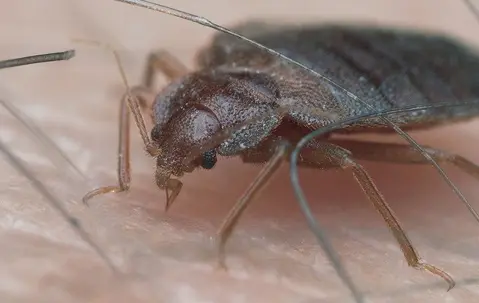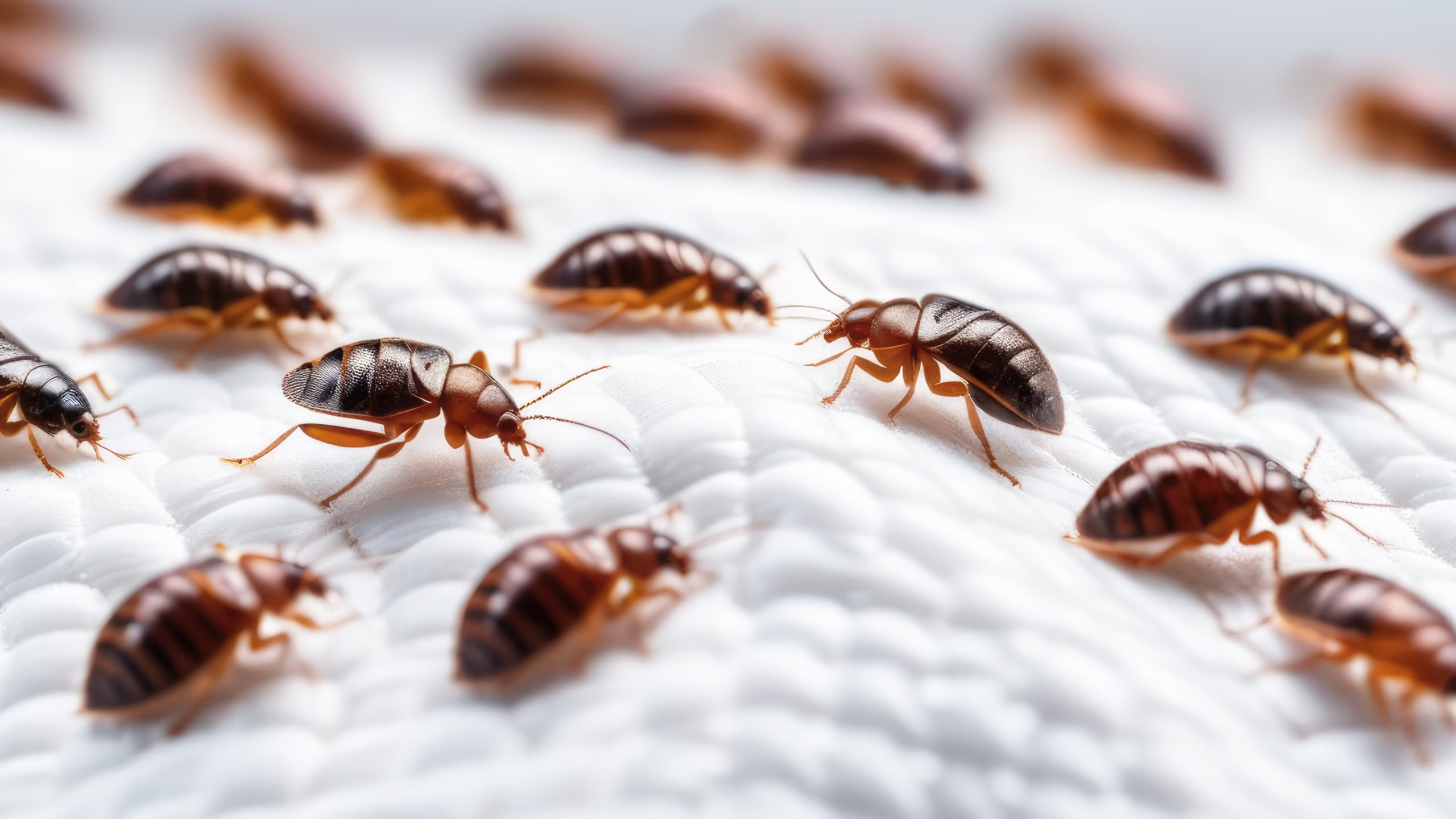Bed Bug Treatments in Florida:
Exterminator Services for Bradenton, Parrish, and Palmetto
Florida’s subtropical climate, characterized by year-round warmth and humidity, draws people to the scenic coastlines and busy communities of Bradenton, Parrish, and Palmetto. Unfortunately, the same mild conditions that visitors and residents enjoy also allow pests like bed bugs to flourish indoors, thriving in warm homes or commercial properties. Bed bugs feed on human blood during the night, causing itchy bites that can lead to interrupted sleep and ongoing stress. Because these insects remain small and elusive—often hiding in mattress seams, behind furniture, or in wall voids—spotting them early is difficult. However, once they take hold, professional bed bug treatments become crucial to stopping an infestation. This service page explains why bed bugs love Florida’s environment, how to recognize a potential outbreak, and why contacting a skilled exterminator promptly can save time, money, and peace of mind.
Why Bed Bugs Thrive in Florida

- Mild Temperatures Year-Round
In more temperate states, frigid winters can slow or halt the bed bug reproductive cycle, giving property owners a seasonal respite. Florida’s climate seldom drops low enough to disrupt these pests. Even short, cooler spells rarely impact indoor environments, so bed bugs stay active, continuously feeding and laying eggs with minimal seasonal pause. - Substantial Tourism and Population Movement
From snowbirds and tourists to local relocations, Florida sees a steady stream of travelers and newcomers. Bed bugs frequently hitch rides in luggage, clothing, or secondhand furniture. In places like Bradenton, where short-term rentals attract visitors, it is easier than many suspect for a single guest to unknowingly bring in bed bugs, which then multiply if not discovered quickly. - Diverse Housing Stock
The region around Parrish and Palmetto presents a range of home types—classic Florida bungalows, modern condos, and multi-unit complexes. Shared walls or ventilation passages in apartment settings can help bed bugs spread from one unit to the next. Meanwhile, older structures with abundant cracks or minimal sealing around floors and baseboards offer bed bugs countless hiding spots. - Minimal Seasonal Dormancy
Harsh winter conditions in cooler states can push bed bugs into slow or dormant phases. Since Florida’s winter usually proves mild, these insects rarely experience a forced slowdown, letting them breed and expand undeterred. A single unnoticed egg-laying female can generate a large infestation within a few months. - Steady Indoor Climate
Whether heated in mild winter nights or cooled in hot summers, Florida homes maintain moderate indoor temperatures that keep bed bugs comfortable. They rely on consistent warmth for quick development from egg to nymph to adult, accelerating their population growth whenever food—human hosts—remains available.
Recognizing a Bed Bug Infestation
- Bites on Skin
One of the earliest clues appears as small, itchy, red welts on arms, legs, neck, or shoulders. While different people react differently—some hardly reacting at all—clusters or lines of bites that appear overnight are strongly indicative of bed bug activity near sleeping areas. - Blood Stains or Fecal Spots
Tiny, rust-colored smears on sheets, pillows, or pajamas may result from bed bugs being crushed after feeding. Alternatively, small, dark specks that can smear if wiped might be bed bug excrement. These stains often cluster around mattress seams or where sleepers rest their heads. - Shed Skins and Egg Shells
As bed bugs mature, they shed translucent exoskeletons. Eggshells, measuring only about 1 millimeter, are also occasionally seen near the same hiding places. Investigating narrow seams, behind headboards, or around baseboard crevices may expose these telltale signs. - Musty Odor
In heavier infestations, bed bugs release pheromones that can produce a subtle, musty odor. Not every infestation yields a noticeable smell, but discovering an unexplained sweetish or unpleasant aroma might be another reason to check for bed bugs. - Actual Bug Sightings
Adult bed bugs run about a quarter-inch long, with flattened, oval bodies that turn a darker, reddish-brown after feeding. Spotting them scurrying away when stripping a bed or moving furniture is a direct confirmation of their presence, often prompting immediate professional help.
Risks of Leaving Bed Bugs Untreated
- Increasing Populations
A lone female bed bug lays multiple eggs daily, with each egg hatching in roughly one to two weeks under warm conditions. A minor intrusion left unnoticed can transform into a more pervasive outbreak, requiring extensive or more disruptive treatments later. - Escalating Discomfort and Anxiety
Bed bugs feed at night, and repeated bites erode sleep quality and peace of mind. Residents may find themselves anxious before bedtime, checking sheets constantly, or avoiding entire rooms altogether. - Damage to Reputation
In commercial or hospitality settings, even a single confirmed bed bug incident can spark negative online reviews, hamper occupant satisfaction, or lower occupancy rates. Fast, decisive action helps preserve trust in your brand. - Potential Spread to Neighbors
Multi-family dwellings, hotels, or close-knit neighborhoods risk bed bugs traveling through shared walls or vents if the infestation is large or if the insects seek new feeding grounds. By ignoring bed bugs in one unit, owners inadvertently create problems for others.

Why Professional Bed Bug Treatments Matter
- Thorough Detection
A reliable exterminator conducts a comprehensive check, spotting bed bugs in hidden cracks or inside furniture joints. Many do-it-yourself attempts fail because they overlook breeding hubs or newly laid eggs that continue the cycle. - Targeting All Life Stages
Bed bug eggs, nymphs, and adults each require tailored approaches, from vacuuming and steaming to insect growth regulators or heat treatments. Professionals layer solutions to eradicate current bugs and hamper future generations. - Reducing Chemical Misuse
Expert pest control specialists use the right products in the right places, minimizing occupant exposure to chemicals while focusing on bed bug hideouts. Over-the-counter sprays, if misapplied, can drive bed bugs deeper into walls, complicating eradication. - Ongoing Prevention Advice
Beyond removing active bugs, a professional service shows property owners how to avoid future infestations—examining luggage after travel, carefully inspecting used furniture, or sealing cracks near baseboards and outlets. - Follow-Up Assurance
Because bed bug eggs can hatch after initial treatments, scheduling re-checks ensures newly emerged bugs do not re-establish the colony. If new bites or droppings appear, swift re-application finishes the job.
The Bed Bug Exterminator’s Techniques
- In-Depth Inspection
Examining beds, linens, carpets, sofas, and any cracks around walls or moldings pinpoints exactly where bed bugs reside and the infestation’s extent—whether localized to one bedroom or spread across multiple rooms. - Vacuuming and Steam Application
Thorough vacuuming lifts surface bugs and eggs from fabrics, while steam kills those embedded deeper in mattress seams or furniture. Steam treatment proves especially beneficial where direct chemical usage might be less ideal. - Chemical Residuals
Insecticides or insect growth regulators along baseboards, bed frames, or carpet edges form a barrier that kills bed bugs traveling across these paths. Applied carefully by a qualified exterminator, these products remain potent for days or weeks, targeting adult bugs and halting egg or nymph development. - Heat Treatments
For severe or multi-room outbreaks, raising indoor temperatures above 120°F for several hours can obliterate all bed bug life stages. This chemical-free tactic demands specialized equipment and thorough preparation, but often eliminates the colony in a single session.
Mattress Encasements
Sealing mattresses and box springs in bed bug-proof covers traps any remaining insects inside, cutting them off from feeding. It also blocks new bed bugs from burrowing into those areas. This measure greatly simplifies future monitoring for potential re-infestations.

Service Areas: Bradenton, Parrish, and Palmetto
Bradenton: Known for its lively Riverwalk and coastal location, Bradenton experiences a steady influx of visitors, part-time residents, and year-round dwellers. The resulting movement of personal belongings can inadvertently allow bed bugs to migrate. Timely detection and thorough treatments protect families and property managers alike from drawn-out infestations.
Parrish: A suburban-rural blend experiencing rapid residential growth, Parrish sees a variety of home styles—some older, some new construction. Regardless of style, bed bugs can infiltrate if secondhand furniture is introduced or if travelers unknowingly carry these insects in luggage.
Palmetto: Nestled alongside the Manatee River, Palmetto offers scenic views and close-knit communities. From classic Florida homes to modern developments, each dwelling can face bed bug threats if no routine checks occur. Promptly requesting professional help ensures these pests do not disrupt the laid-back Florida lifestyle.
Next Steps
Noticing itchy bites in the morning, suspicious black spots on your sheets, or small insects inside mattress seams? Contact us to learn more or schedule your service. Our bed bug treatments in Bradenton, Parrish, and Palmetto are engineered to address each infestation stage—from newly laid eggs to adult bugs—using proven methods that deliver long-term relief. Partner with an experienced exterminator who understands Florida’s climate and the unrelenting nature of bed bugs.
By intervening now, you block bed bugs before they spread further or complicate daily life. Rely on layered solutions—vacuuming, steam, chemical barriers, or heat treatments—to eliminate existing populations and discourage re-establishment. Quick, decisive action spares you the anxiety and possible furniture losses that accompany bed bug outbreaks.
Sustaining a Bed Bug-Free Property
Once you clear bed bugs, ongoing vigilance helps maintain a comfortable, pest-free environment. Some key tips for Florida homeowners and property managers include:
- Inspect Travel Items: After returning from trips, check suitcases or clothing. Launder items at high temperatures to destroy possible hitchhikers.
- Scrutinize Secondhand Goods: Thoroughly examine used furniture, mattresses, or décor for signs of bugs before bringing them indoors.
- Encase Mattresses: Specialized covers keep bed bugs out of mattress seams and also trap any remaining ones inside. Checking the encasement surface regularly helps ensure no new bug activity emerges.
- Vacuum and Launder: Periodic vacuuming of carpets, rugs, or upholstery disrupts potential hiding spots. Washing sheets, pillowcases, and blankets on hot cycles hampers bed bug eggs.
- Maintain Clutter-Free Spaces: Reducing clutter near sleeping areas eliminates multiple bug hideouts, making any new infestation easier to spot and address promptly.
Through these proactive steps, southwestern Florida residents can take full pleasure in coastal living without the stress of hidden biting insects. By pairing consistent housekeeping with professional bed bug treatments when needed, you create a zone that is far less hospitable to bed bugs, ensuring your household or business remains a welcoming place for people but inhospitable to sneaky parasites.
